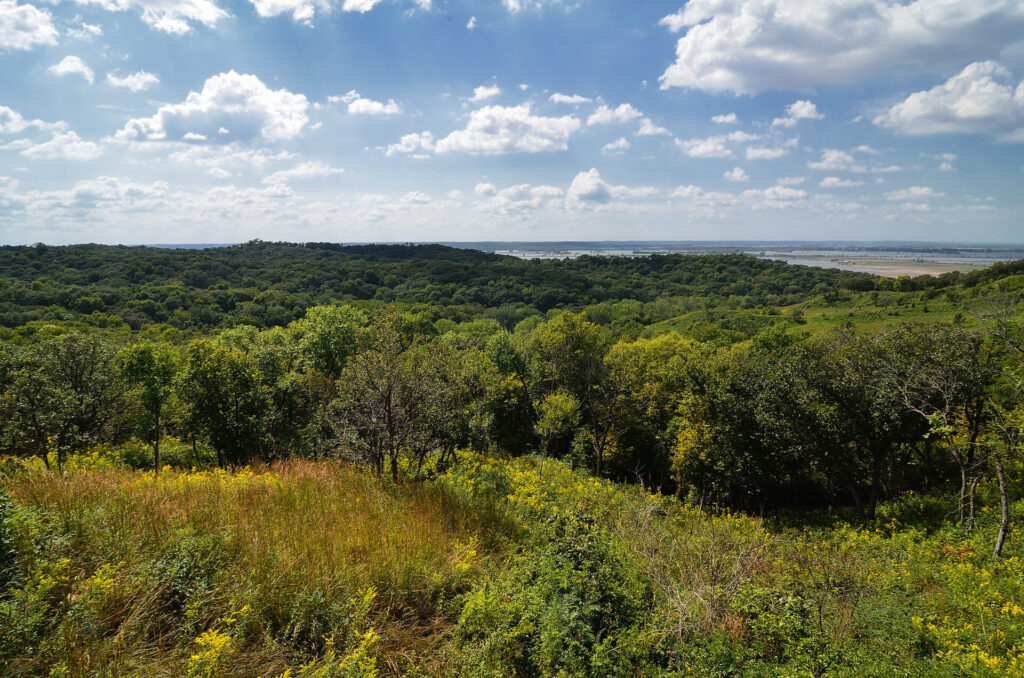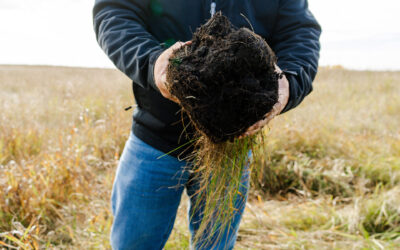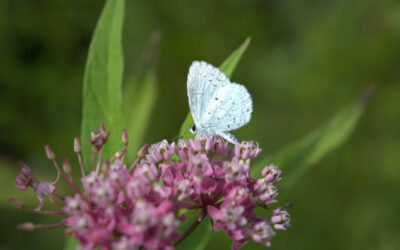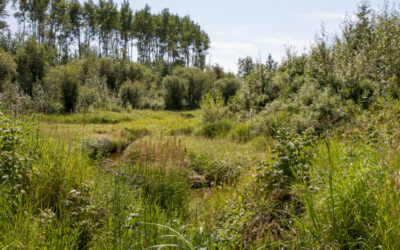Iowan Seth Watkins has a dream to bring biodiversity back to Southwest Iowa and build a brighter, more vibrant rural community. ALUS is one of the ways he wants to achieve it.
Seth Watkins has been trying to make his farm smaller. He’s reduced his Iowa acreage from 3000 to 400 acres and his calf-cow operation from 600 to 100 head. Seth’s farm is now more representative of the state average farm size of just over 350 acres and 50 head, but now he’s doing more with less. He’s added a small flock of sheep, bees and chickens, and he hopes to add edible perennials to the mix once he’s restored the aging ponds on his land. He’s also turned his attention toward protecting Iowa’s unique soils, improving the region’s water quality and returning tallgrass prairie to the landscape to support cattle grazing and biodiversity.
“Agriculture works best when it works with nature.”
“Agriculture works best when it works with nature,” says Seth. Over the years, he’s learned that by building diversity and managing the health of the natural resources on the land, he can run a productive and more resilient business while effecting positive environmental change that benefits the farm and the surrounding community.
Diversity and symbiosis on the farm have become increasingly more important to Seth. He’s discovered he can run one sheep for every cow without adding additional forage. The sheep graze different species (including many weeds). His hay fields have also been more productive because of the bees, and he hopes the bees will support the edible perennials he plants. Once the ponds are restored, they’ll help reduce nutrient run-off and the risks of flood and drought, while also creating more habitat for beneficial wildlife and insects.
You don’t need to reduce the size of your farm to work with nature and build resilience. Seth acknowledges that you can farm big and still take care of the environment. But Seth has another goal: He wants to attract more young people to rural Iowa and reduce the barriers of getting into farming.
Trends show that farms are getting bigger, farmers are getting older and younger people are leaving. Seth says you can track those trends against the loss of biodiversity on the landscape. He believes that by restoring biodiversity and Iowa’s water resources, they can create a more vibrant community where people want to live and work.
“My dream for whoever takes over this [farm] is that they can wind up with a farm in Iowa that raises maybe a dozen or more crops and has multiple revenue streams.”
And if one of those revenue streams comes from creating, restoring and managing nature on the working landscape in a socially responsible way that also helps clean the air and water and provide habitat for a diversity of wildlife, says Seth, then you can have a farm that not only provides people with food, but also has a positive environmental impact.
In many ways, Seth is unique among his peers. Farms across Canada and the United States have been getting bigger, not smaller, while the number of farm families have decreased. And many farms have narrowed their focus to only a few commodities rather than diversified. But one of the things Seth shares with farmers big or small is the desire to do things better: “I have a lot of farmer friends that have said we need to do something different,” says Seth. “But generally, farmers are told what to do instead of having a chance to work together and lead on [agri-environmental] projects; I think that’s what I really love about ALUS. It’s about farmers coming together, leading with solutions that are best for our land and our communities. ALUS gives us the tool to do so.”
ALUS’ non-prescriptive, farmer-led program model is one of the reasons Seth was motivated to collaborate with Cara Morgan from Golden Hills Resource Conservation and Development (RC&D) to make Southwest Iowa the first community in the United States (US) to adopt the ALUS program. Although farmers and ranchers in Iowa have access to a variety of cost-sharing opportunities, ALUS offered something both complementary and different.
ALUS provides communities with a unique turn-key agriculture-based ecosystem services program that embeds decision-making authority within a Farmer Partnership Committee (FPAC) whose membership includes community leaders and a minimum of 50% local farmers and ranchers representing various operation types and sizes. The FPAC independently governs the local ALUS program and is uniquely equipped to identify, prioritize, and develop the best solutions to region-specific problems. The program also rewards participating farmers and ranchers through annual payments for creating, restoring, managing and maintaining nature-based projects on marginal agricultural lands. ALUS Southwest Iowa Loess Bluffs (SWI) is the first ALUS community to launch in the US.

Loess Hills, Photo CC BY-NC-ND 2.0 DEED Northern Lights 119.
“ALUS works alongside [other funding] opportunities to support the long-term management and maintenance of projects by providing on-going annual payments, but also by creating and supporting social networks within rural farming communities that facilitate knowledge sharing and peer-to-peer learning. With support from ALUS SWI, local farmers and ranchers will be able to generate permanent, positive environmental benefits for their farms and the surrounding community,” says Cara Morgan, Executive Director of Golden Hills RC&D, who worked with Seth to launch ALUS in Iowa.
The most pressing opportunities for Southwest Iowa include restoring aging ponds to improve water quality and planting native tallgrass prairie to reduce soil erosion and build biodiversity back. Seth also hopes to increase cattle grazing to help keep permanent vegetation as forage on the landscape and their unique loess and drifted soils in place. He’s also been thinking about how ALUS SWI could foster mutually beneficial relationships between cattle farmers and crop growers, such as by using cattle to terminate cover crops.
Seth doesn’t shy away from dreaming big. But there are challenges. Many farmers rent the land they farm, and both the farmer and the landowner expect returns. It’s part of ALUS SWI’s role to communicate the value of nature both to the farmer and the landowner. And then there’s logistical challenges: if you create a cattle-crop grazing network, you need to build the infrastructure to move the cattle around. But again, that’s where ALUS comes in. “It comes back to having that FPAC [Farmer Partnership Advisory Committee] working with you, saying ‘what if you do this’ or just asking the ‘what if’ questions,” says Seth. “The magic is we’ve got a group of farmers working together on that.”



